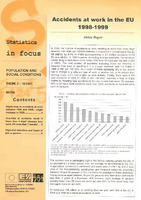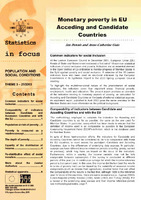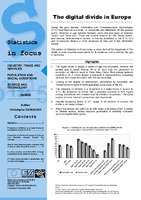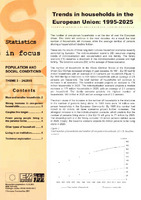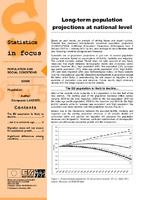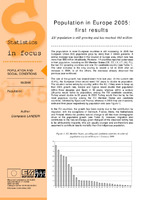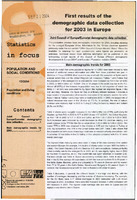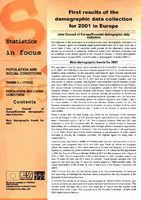Αναζήτηση
Αποτελέσματα 1-10 από 22
Statistics in Focus: Population and social conditions. Accidents at work in the EU 1998-1999.
(Eurostat, 2001)
In 1998, the number of accidents at work resulting in more than three days' absence from work per 100 000 persons in employment (incidence) in the EU fell slightly, by 0.4%, to 4 089 (corresponding to 4.7 million accidents ...
Statistics in Focus: Population and social conditions. Monetary poverty in EU Acceding and Candidate Countries.
(Eurostat, 2003)
At the Laeken European Council in December 2001, European Union (EU) Heads of State and Government endorsed a first set of 18 common statistical indicators of social exclusion and poverty. Indicators are an essential element ...
Statistics in focus. Industry, trade and services. Population and social conditions. Science and technology. The digital divide in Europe.
(Statistical Office of the European Communities and Social Statistics, 2005)
During the past decade, Information and Communications Technologies (ICTs) have become available, i.e. accessible and affordable, for the general public. However, a gap remains between users and ...
Statistics in Focus: Population and social conditions. Trends in households in the European Union: 1995-2025.
(Statistical Office of the European Communities and Social Statistics, 2003)
The number of one-person households is on the rise all over the European Union. This trend will continue in the next decades. As a result the total number of households will increase, while the average number of persons ...
Statistics in Focus: Population and social conditions. Long-term population projections at national level.
(Statistical Office of the European Communities and Social Statistics, 2006)
Based on past trends, an analysis of driving forces and expert opinion, Eurostat has produced internationally consistent population projections (EUROPOP2004: EUROstat POpulation Projections ...
Statistics in Focus: Population and social conditions. Population in Europe 2005: first results
(Statistical Office of the European Communities and Social Statistics, 2006)
The population in most European countries is still increasing. In 2005 the European Union (EU) population grew by more than 2 million persons. A similar increase was recorded in the Council of Europe ...
Statistics in Focus: Population and social conditions. First results of the demographic data collection for 2003 in Europe.
(Statistical Office of the European Communities and Social Statistics, 2004)
This publication provides basic demographic information for 2003, including statistics for the enlarged European Union. Information for the 10 new countries appeared previously under the sub-section "Other Council of ...
Statistics in Focus: Population and social conditions. First results of the demographic data collection for 1999 in Europe.
(Statistical Office of the European Communities and Social Statistics, 2000)
This is the third publication from the joint data collection exercise carried out by the Council of Europe and Eurostat. The country coverage is included in the tables and in the Glossary on the following ...
Statistics in Focus: Population and social conditions. First results of the demographic data collection for 2002 in Europe.
(Statistical Office of the European Communities and Social Statistics, 2003)
The objective of this publication is to provide some basic demographic information for 2002. However, given the timetable (rapid questionnaire sent out in April 2003 with a return date of May), not all countries could ...
Statistics in Focus: Population and social conditions. First results of the demographic data collection for 2001 in Europe.
(Statistical Office of the European Communities and Social Statistics, 2001)
The objective of this publication is to provide some basic demographic information for 2001. However, given the timetable (rapid questionnaire sent out in April 2002 with a return date of May), not all countries could ...

